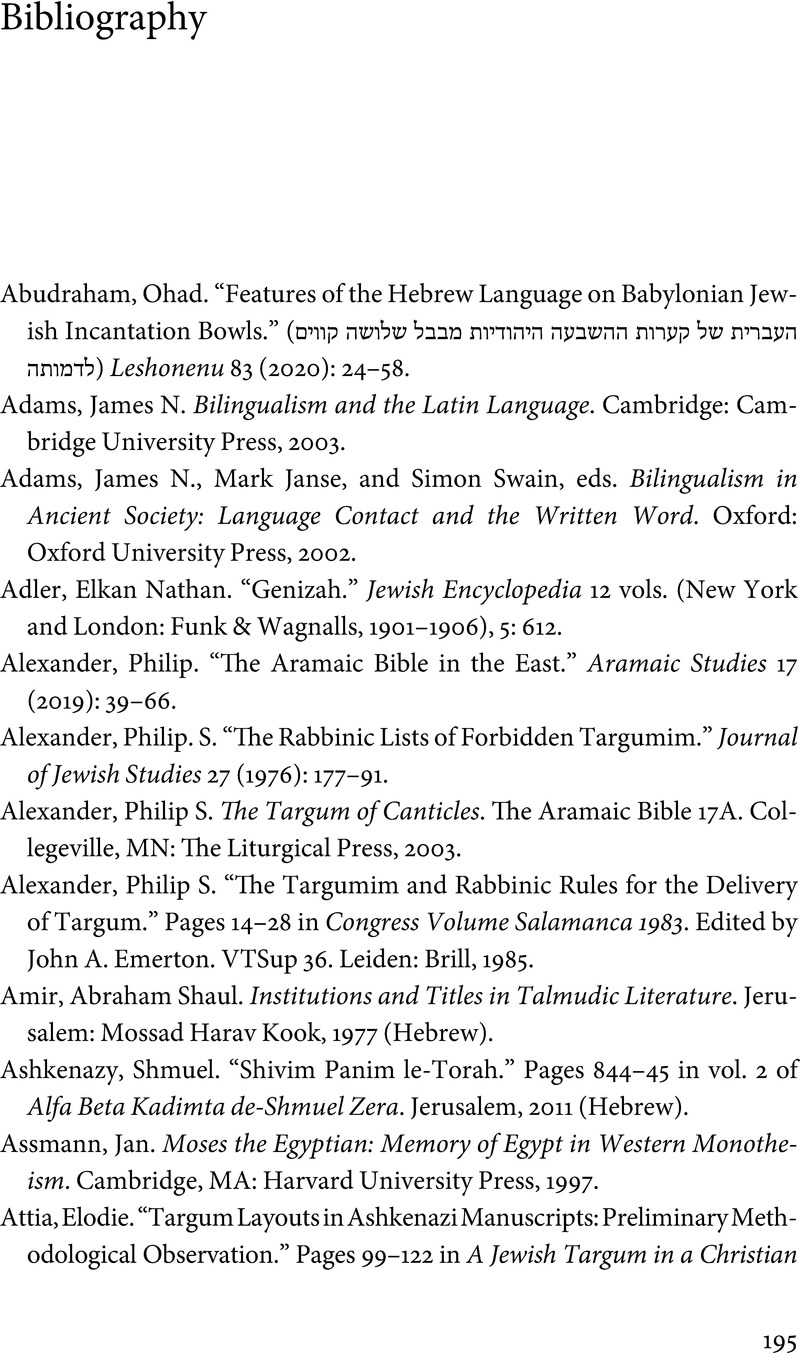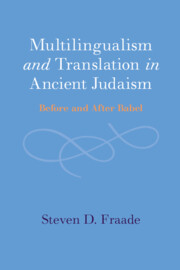Book contents
- Frontmatter
- Dedication
- Contents
- Preface
- Note on Abbreviations and Transliterations
- 1 Introduction
- 2 Before Babel
- 3 Seventy Languages (and Translations) for Seventy Nations
- 4 Ezra the Scribe and the Origins of Targum
- 5 Out of the Fire and Into the Wall
- 6 “Reading Leads to Translation” Whether Public or Private
- 7 Be Careful What You Wish For
- 8 Afterword
- Bibliography
- Ancient Sources Index
- Modern Scholars Index
- Subject Index
- References
Bibliography
Published online by Cambridge University Press: 01 August 2023
- Frontmatter
- Dedication
- Contents
- Preface
- Note on Abbreviations and Transliterations
- 1 Introduction
- 2 Before Babel
- 3 Seventy Languages (and Translations) for Seventy Nations
- 4 Ezra the Scribe and the Origins of Targum
- 5 Out of the Fire and Into the Wall
- 6 “Reading Leads to Translation” Whether Public or Private
- 7 Be Careful What You Wish For
- 8 Afterword
- Bibliography
- Ancient Sources Index
- Modern Scholars Index
- Subject Index
- References
Summary

- Type
- Chapter
- Information
- Multilingualism and Translation in Ancient JudaismBefore and After Babel, pp. 195 - 218Publisher: Cambridge University PressPrint publication year: 2023

